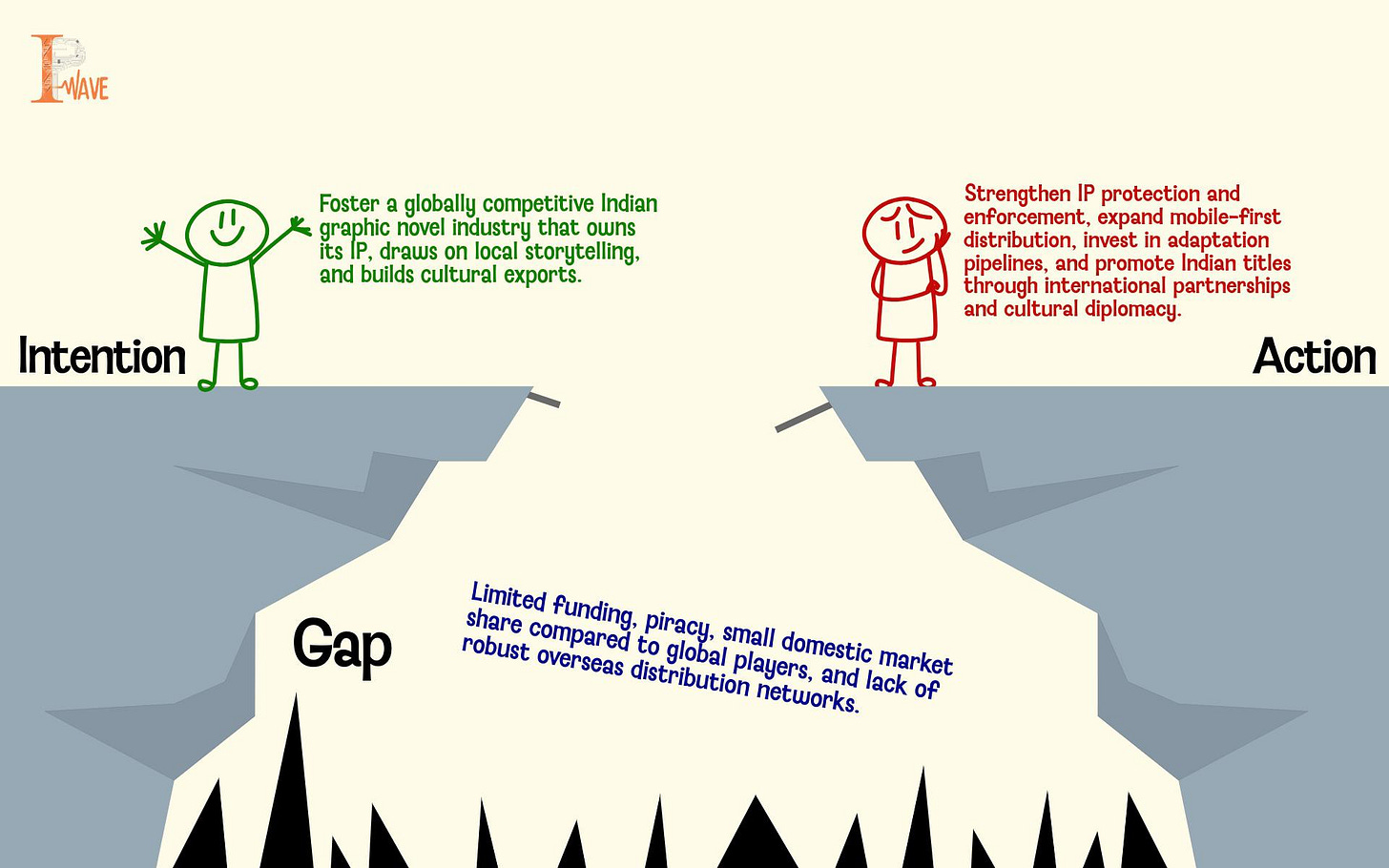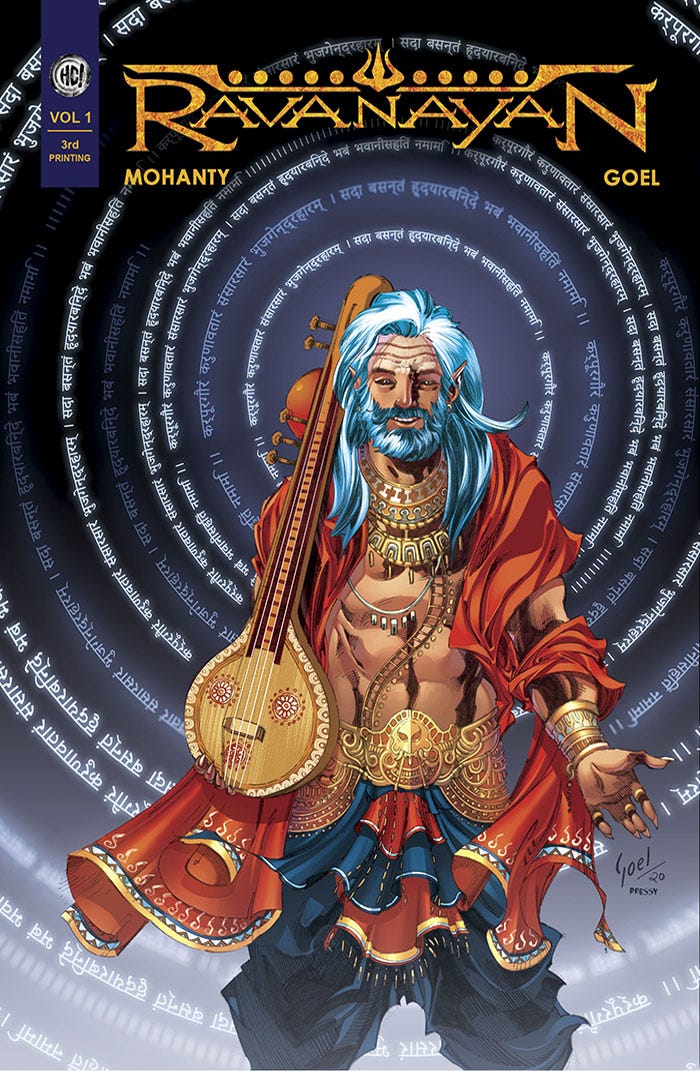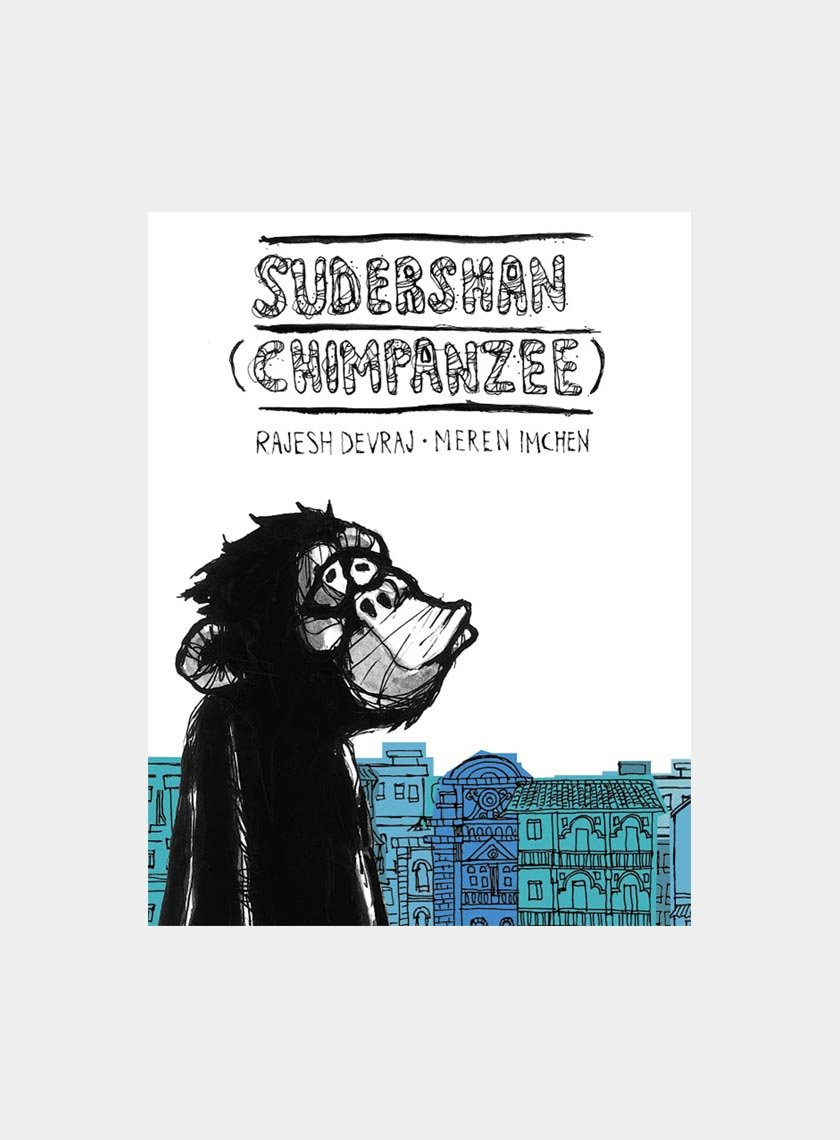Manga from Mumbai: India’s Bet on Graphic Novel IP
For decades, India’s graphic storytelling scene trailed behind Japan’s manga and America’s superheroes. Homegrown work existed, often as cult classics, but rarely went global. Now, creators are building exportable IP around original graphic novels with a clear focus on copyright, trademarks, merchandising, and screen adaptations.
Ravanayan is emblematic of this shift. Written by Vijayendra Mohanty and illustrated by Vivek Goel of Holy Cow Entertainment, it reimagines the Ramayana from Ravana’s perspective. What began as an indie passion project evolved into a model for creators who own their worlds and expand them across multiple media formats
Atharva: The Origin is another high-profile IP bet. Written by Ramesh Thamilmani and featuring MS Dhoni, the graphic novel launched with a cinematic and web series campaign. It illustrates how celebrity-anchored projects can fuel transmedia ambitions in India.
Even niche works are now part of the IP strategy. Sudershan (Chimpanzee), written by Rajesh Devraj and illustrated by Meren Imchen, and published by Hachette India, blends nostalgic charm with vivid design. It shows how unique Indian stories can travel when creators manage rights from the start.
Distribution channels are improving. Pratilipi Comics has scaled into a major multilingual comics app. Toonsutra, from Graphic India, has built a local webtoon platform in Hindi, Tamil, Telugu, and English, drawing strong investment and download numbers. Mobile distribution is reducing print risks and building audience data that can support licensing and adaptation deals.
The IP-to-screen pipeline is now proven. The Legend of Hanuman by Graphic India became a breakout animation hit on Disney+ Hotstar and has continued for multiple seasons. That success is pulling more graphic novel creators into early adaptation discussions.
The market numbers are encouraging. India’s comics market is estimated at USD 687 million in 2024, with a projected 12 percent CAGR from 2025 to 2030. This makes it a promising space to develop multiformat IP strategies, even though it is still far behind Japan.
Policy support is also playing a role. The National IPR Policy (2016) and CIPAM have raised awareness about managing IP. Maharashtra’s IP Crime Unit provides a legal channel to tackle piracy. Platforms like the WAVES (World Audio Visual Entertainment Summit) now spotlight comic creators through initiatives such as the Comic Creator Championship, helping match talent with commercial partners.
Challenges remain. Venture funding for comics-focused ventures is scarce. Piracy is persistent. Building overseas distribution networks is complex. Yet with cultural stories that are distinctly Indian and globally relatable, mobile reach, and a growing awareness of IP value, the pieces are coming together.
If one Indian graphic novel achieves a major international breakthrough, whether through a viral webtoon or a prestige animation series, the export model could become repeatable. The shift from comics as a hobby to IP as a core strategy is already underway. Somewhere in Mumbai, a creator is sketching a character and filing a trademark at the same time.




